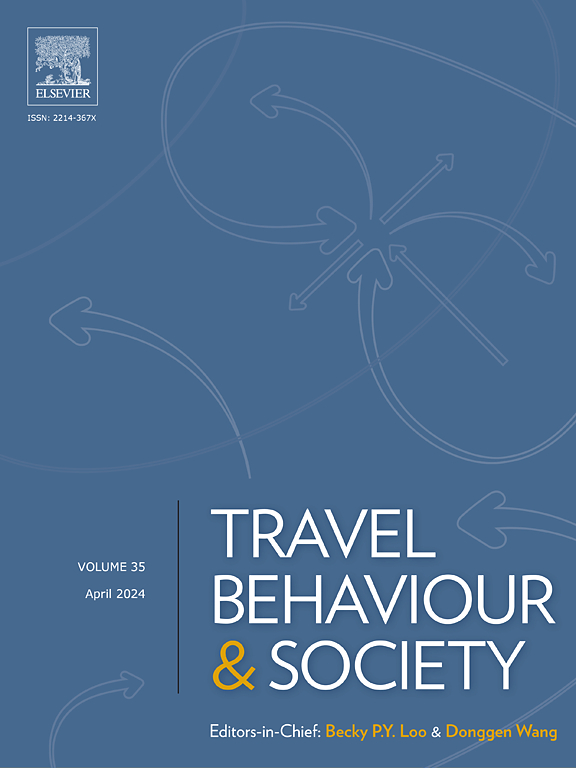E-scooters and public transit: unveiling the conditions for a connection using trip and survey data
IF 5.7
2区 工程技术
Q1 TRANSPORTATION
引用次数: 0
Abstract
Shared e-scooters have become a popular alternative for short trips and can serve as a first- and last-mile connector to transit. This study investigates the factors motivating e-scooter users to connect to public transit through the analysis of 48,301 e-scooter trips in 20 US cities. While most e-scooter studies, to date, rely on geo-spatial assumptions to assess whether a transit connection was made, this study uses rider survey data where users reported transit connections upon ending their e-scooter trip. Presented during the parking process, the rider survey asked when the decision to use the e-scooter was made. Responses were analyzed using a binary logit model on the decision to use e-scooters in connection to transit. The model includes urban and built environment characteristics to control for heterogeneity across urban spaces. People who decide to use an e-scooter spontaneously are found to be more likely to connect to transit than those who plan their trip in advance. This research provides novel insights into modal substitution, demonstrating how an e-scooter trip may substitute for just a portion of a transit trip rather than the full trip. Respondents were segmented into four groups based on their propensity for connecting with public transit: complements (20.5%), substitutes (3.2%), no interaction (72.9%), and mixed effects (3.3%). Trips that substituted for transit averaged 1.82 miles, a statistically significant longer distance than those complementing transit trips or that had no transit interaction. We conclude that these trips may otherwise have been made by rideshare, and previous assessments have overestimated the modal substitution of e-scooters for transit. Among the 6.5% of trips for which respondents say they would have used transit if e-scooters were not available, approximately half connected to transit before/after using the e-scooter, suggesting a more nuanced adjustment in how e-scooters complement the use of transit.
电动滑板车和公共交通:利用出行和调查数据揭示两者连接的条件
共享电动滑板车已经成为短途旅行的一种流行选择,可以作为交通的第一英里和最后一英里连接器。本研究通过对美国20个城市48301次电动滑板车出行的分析,调查了促使电动滑板车用户使用公共交通工具的因素。迄今为止,大多数电动滑板车研究都依赖于地理空间假设来评估是否建立了交通连接,而本研究使用了用户调查数据,用户在结束电动滑板车旅行时报告了交通连接。在停车过程中,骑手调查询问了何时决定使用电动滑板车。使用二元logit模型对使用电动滑板车的决定进行分析。该模型包括城市和建筑环境特征,以控制城市空间的异质性。研究发现,自发决定使用电动滑板车的人比那些提前计划出行的人更有可能换乘交通工具。这项研究为模式替代提供了新颖的见解,展示了电动滑板车如何替代交通旅行的一部分,而不是整个旅行。受访者根据他们与公共交通的联系倾向分为四类:互补(20.5%)、替代(3.2%)、不互动(72.9%)和混合效果(3.3%)。替代公交的出行平均为1.82英里,从统计上看,这比那些替代公交出行或不与公交互动的出行要长得多。我们的结论是,这些出行可能是由拼车完成的,而之前的评估高估了电动滑板车对交通的替代方式。在6.5%的受访者表示,如果没有电动滑板车,他们会使用交通工具,其中大约一半的人在使用电动滑板车之前/之后会使用交通工具,这表明电动滑板车如何补充交通工具的使用需要进行更细微的调整。
本文章由计算机程序翻译,如有差异,请以英文原文为准。
求助全文
约1分钟内获得全文
求助全文
来源期刊

Travel Behaviour and Society
TRANSPORTATION-
CiteScore
9.80
自引率
7.70%
发文量
109
期刊介绍:
Travel Behaviour and Society is an interdisciplinary journal publishing high-quality original papers which report leading edge research in theories, methodologies and applications concerning transportation issues and challenges which involve the social and spatial dimensions. In particular, it provides a discussion forum for major research in travel behaviour, transportation infrastructure, transportation and environmental issues, mobility and social sustainability, transportation geographic information systems (TGIS), transportation and quality of life, transportation data collection and analysis, etc.
 求助内容:
求助内容: 应助结果提醒方式:
应助结果提醒方式:


